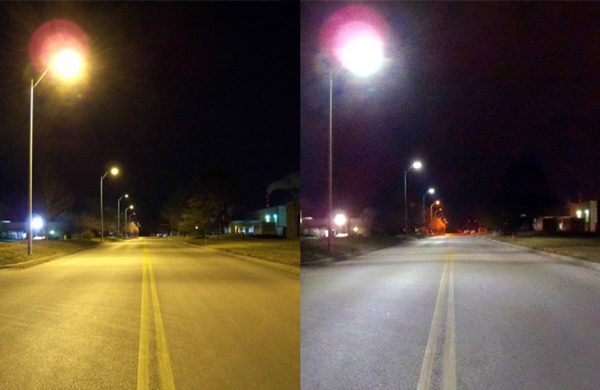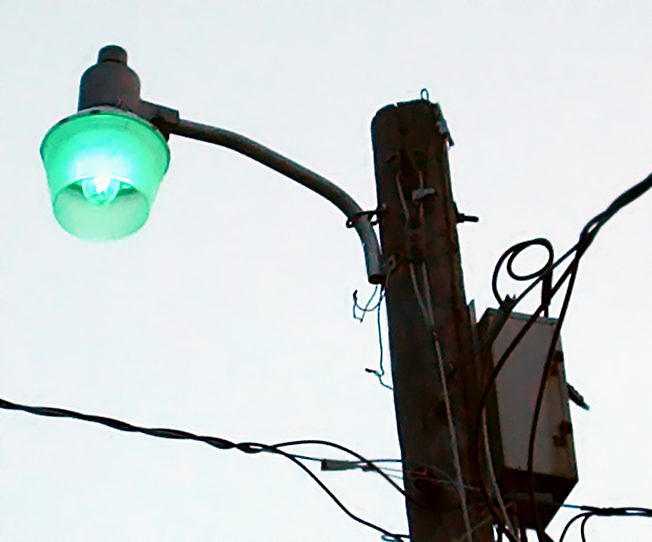Charlotte to phase in less energy-greedy street lights

It was a challenge thrown at the feet of the city of Charlotte in September 2008. In a package in The Charlotte Observer looking at the region’s future, writers Neal Peirce and Curtis Johnson urged Charlotte and nearby cities to position themselves as a “Green, Great & Global” region.* One way to signal this aim, they recommended, would be to upgrade to LED streetlights throughout the region.
Today, five and a half years later, the City of Charlotte is starting to phase in LED streetlights, as an energy-saving move that will also lower the area’s carbon footprint.
The City of Charlotte does not own or operate any of the approximately 72,000 city street lights. The N.C. Department of Transportation owns lights along interstate highways and parts of U.S. 74. The rest, along city streets, are owned and operated by Duke Energy. The city pays the utility for the service, using rates set by the N.C. Utilities Commission.
The move to LEDs, discussed at a City Council environment committee meeting Feb. 26, comes after a pilot project the city undertook in uptown Charlotte.
For the pilot, 229 LED light fixtures were installed in 2012 in an area bounded by College, Stonewall, Caldwell and Sixth streets. The city paid upfront for buying and installing those lights. Since then, energy savings have amounted to 168,144 kilowatt hours per year, which equates to 119 metric tons of carbon dioxide, the greenhouse gas emissions from 25 passenger cars, or the emissions from 13,300 gallons of gasoline consumer.
As Phil Reiger, business manager for Charlotte Department of Transportation, told the council, LEDs (for light-emitting diode) use less energy, last longer, are more durable and offer a comparable light quality. Reiger told the committee the 229 LEDs save the city about $7,800 annually. In most cases LED rates for cities are 7 percent to 15 percent lower than traditional street lighting rates, he said.
The city generally has three kinds of street lights. The oldest are mercury vapor lights, which give a blue-green light and, containing mercury, are increasingly frowned upon as an environmental choice. As they burn out, they’ll be replaced with LED lights. However, about 90 percent of the lights in the Charlotte region are high-pressure sodium lights, distinguished by an orange colored light. The city hopes eventually to be able to phase out the high-pressure sodium lights, as well.
Among the other N.C. cites that are moving toward using LED street lights are Ashville, Raleigh and Cary.
For now, at City of Charlotte-owned facilities, LEDs will be used for new construction or to replace older lights. One example: In the Charlotte-Mecklenburg Police Department main parking deck, 301 LED lights have been installed, saving 307,000 kilowatt hours a year, and $12,000 a year.
Another example: the arrival area at Charlotte Douglas International Airport, where 12 light fixtures were replaced with LEDs, for a 28 percent reduction in energy use, and the airport’s entrance roadway, where 53 light fixtures were replaced, for a 40 percent reduction in energy use.
Reiger said the city will also encourage developers to use LED lights for new construction. As for a complete switch-out of all city street lights? As Phil told the committee, with 72,000 streetlights, “We’ve got some work to do.”
For more information
- Download a 2013 “Asheville LED Street Light Case Study.”
- * The 2008 Citistates Report was funded by the UNC Charlotte Urban Institute, with a grant from the John S. and James L. Knight Foundation. Read all four installments here.